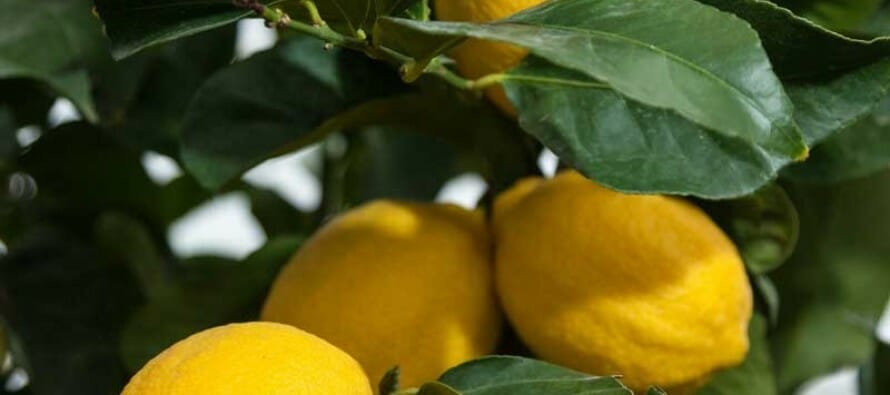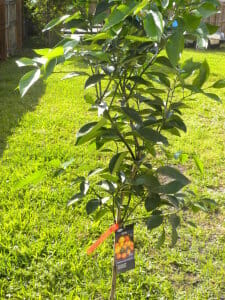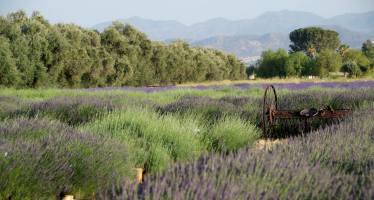7 Steps for Doing Well with Citrus in the Coachella Valley!!

Doing Well with Citrus in the Desert |Coachella Valley| Information provided by DHSCV member Dan Goldber
There are seven main points to remember for doing well with citrus trees:

Hamlin Orange Tree
1. Pick the right tree. Some varieties do better here than others. For example, Eureka Lemon does better than Meyer; Hamlin Orange does better than Washington Navel. Check the Sunset book for the best varieties in the desert. Some trees also do well with a pollinator tree nearby. Mandarins need Tangelos and vice-versa.
2. Pick the right place. Citrus need 8 hours of full sun and good drainage. (Fill the planting hole full of water and make sure it drains in 8 hours before planting.)
3. Plant it right. Don’t plant it too deep. Don’t add fertilizer to the backfill; if anything, use a product called Ortho Upstart (a root stimulant). Loosen the soil within a 2-foot circle around the tree with a spading (pitch) fork. Then mulch with 2 inches of redwood bark.
4. Minimize pruning. Thin out in the middle and keep the center open. Don’t prune it to look like a lollipop. Let the foliage grow down to the ground, because that not only creates additional fruit-bearing area but also protects the trunk from sunburn.
5. Protect the trunk from the sun.Protection from sunburn is why citrus often have their trunks painted white and come from the grower with paper protection around the trunk. If the trunk is exposed to sunlight, paint with a water- or rubber-based paint. Do NOT use oil-based paint.

Some trees also do well with a pollinator tree nearby. Mandarins need Tangelos and vice-versa.
6. Fertilize 3 times a year.That would be January/February, April/May, and August/September. Don uses Scott’s citrus fertilizer at the rate of 1 cup per 5 square feet, and then really soaks the plant. Generally it is better to soak the plant when watering and let it dry out in between soakings. Be sure the fertilizer also contains a small amount of the micronutrients iron (Fe) and zinc as well as the 3 primary macronutrients: N-P-K.
7. Protect from pests and frost. Old sheets or Reemay cloth (available from Amazon, among others) are a very light frost blanket.
You can find a watering schedule for citrus at this link – Citrus Watering Schedule.
Related Articles
Make Your Day Trip a Mission
Make Your Day Trip a Mission By Françoise Rhodes of Traveling With Françoise and Artifacts and Arts Across
Enter to Win – 2 Silver Reserved -Table Seats (a $500 Value), enjoy the entire Weekend at Garden Jam Music Festival on us… Indian Wells… courtesy of Coachellavalley.com
April 5th & 6th. You and a friend can be our guest at the event that kicks off Festival month
11th Annual Lavender Festival!
The 11th Annual Lavender Festival will be held June 13-14, June 20-21, 2015, 10am-6pm Every June, we welcome visitors to




